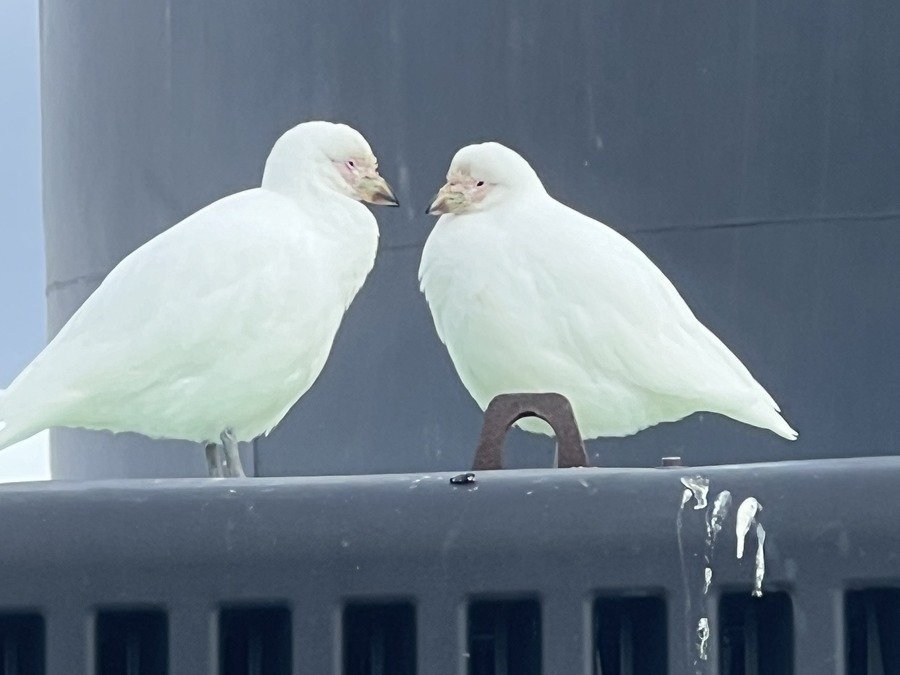12 Days of Antarctica: Wildlife Wonders from the Icy South
Welcome to the #12DaysOfAntarctica series!
Following my immersive leadership expedition in Antarctica with Homeward Bound, I was inspired to bring together snapshots of the remarkable animal characters I encountered during my journey. These Antarctic creatures are not just fascinating; they're downright endearing, underscoring the marvel that our planet embodies. However, the urgency to preserve biodiversity and tackle climate change calls for immediate action.
Initially introduced on my social platforms, I've decided to compile these captivating images and anecdotes in this blog. The goal is simple: to open our eyes and hearts to action. Let's begin!
#12DaysOfAntarctica | DAY 1: Gentoo Penguins

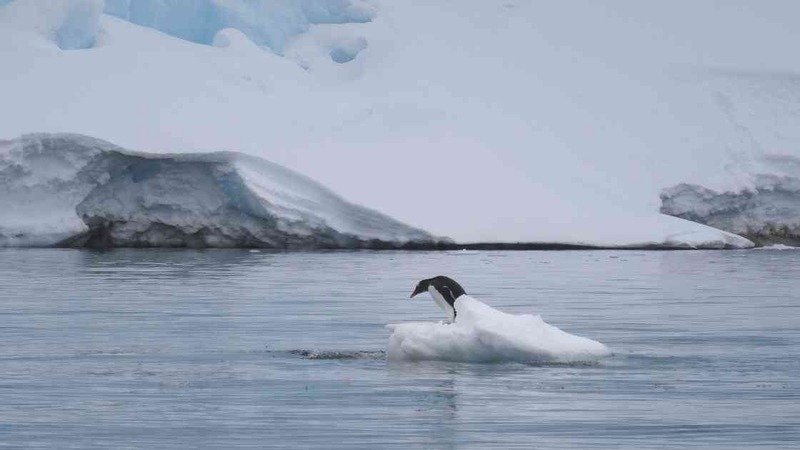
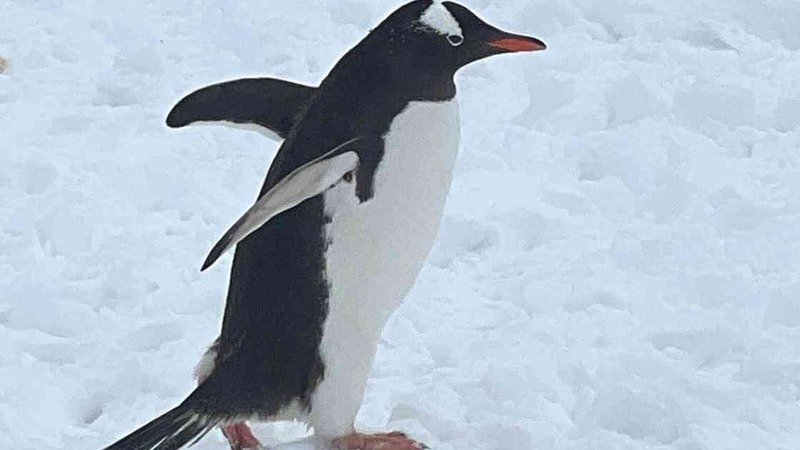
Meet the gentoo penguins, adorable waddlers with white headbands and red-orange bills. These penguins are the world's fastest underwater birds, reaching an impressive 22 miles per hour! Although many species of plants and animals are being devastated by climate change, to date, gentoos seem to be adapting to warmer conditions and far less sea ice. But their future is uncertain, given the twin threats of declining krill levels (gentoo food) and avian influenza reaching the South Sandwich Islands in the Antarctic region.
#12DaysOfAntarctica | DAY 2: Elephant Seal Pups
Meet the adorable elephant seal pups, who surprised us on the beach at Walker Bay. Since newborn elephant seals can’t swim for about a month, storms—like those happening more often due to climate change—can make it hard for them to survive. And right now, avian influenza is causing “mass deaths” of elephant seals in South Georgia, including these very young ones (that’s why we canceled our visit to South Georgia). Stay tuned for a video of these pups … since they have to practice holding their breath, they do a lot of snorting, burping, and farting!
#12DaysOfAntarctica | DAY 3: Rockhopper Penguins
Meet the rockhopper penguins, with their spiky yellow and black head feathers and their ability to hop up steep cliffs! Penguins are famous for their dedication to their chicks, but the rockhopper’s rigid parenting strategies are failing to adapt to climate change. The more time the parent penguins spend looking for food like krill (which is declining), the less time they spend feeding their babies. This sad situation highlights the importance of not only acting to turn the tide on climate emissions, but of adapting to the climate change that we have already locked in due to our slowness to respond to the climate crisis.
#12DaysOfAntarctica | DAY 4: Magellanic Oystercatcher
Meet the Magellanic oystercatcher, known for its long, flattened, orange-red bill and bold plumage.
This one followed me on my walk along the beach at Saunders Island, in the Falklands. Shorebirds like this one are vulnerable to climate change, like when marine heat waves cause ocean food webs to crash. The health of these “sentinel” species can therefore provide important signals about changing conditions that need our attention and action.
#12DaysOfAntarctica | DAY 5: Chinstrap Penguins
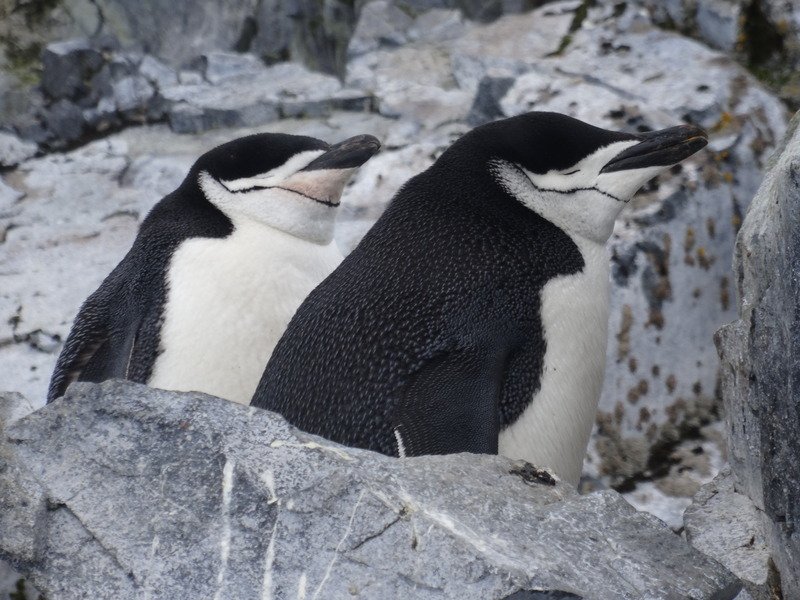
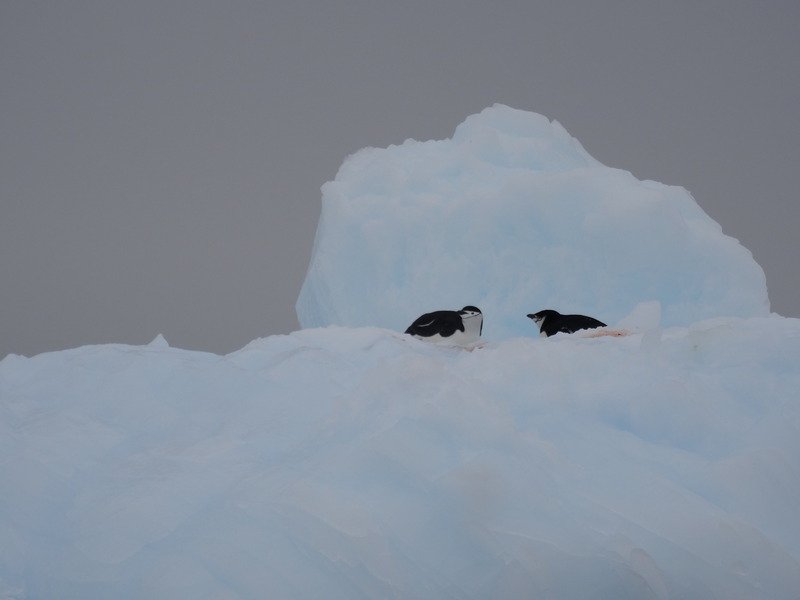
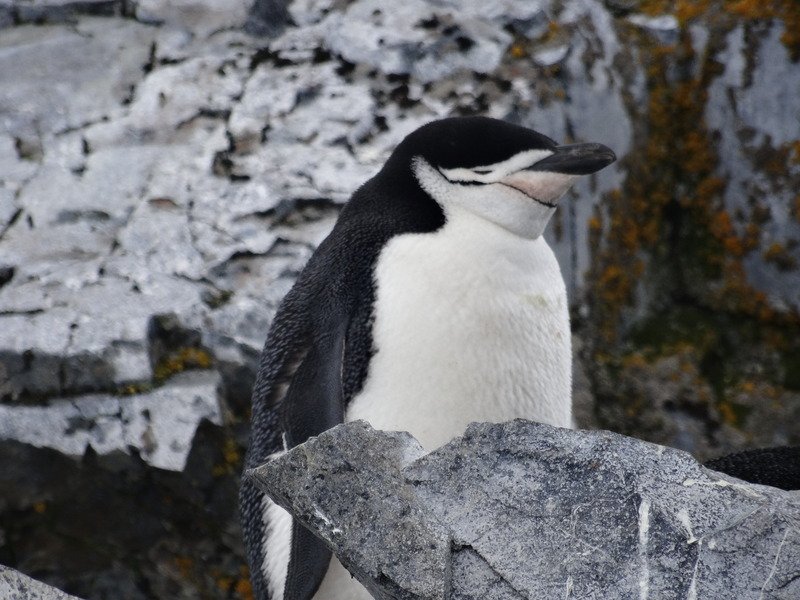
Meet these adorable chinstrap penguins! Did you see the recent news stories about the 4-second “microsleeps” that these birds rely on while waiting for their eggs to hatch? I bet that sounded familiar! Sadly, chinstrap populations are in catastrophic decline, with more than half of their colonies having lost more than half of their members. Climate change is a likely culprit, highlighting the need for urgent action.
#12DaysOfAntarctica | DAY 6: Snowy Sheathbill
Meet the snowy sheathbill, which has the dubious reputation of having only one leg (it definitely has two legs!) and feasting on poop (leading to a funny nickname that I won’t repeat here). Since these birds are found throughout the Antarctic region and will eat just about anything, Chilean scientists recently focused on the viruses carried by the snowy sheathbill and what they can tell us about the changing southern environment. It’s an interesting approach to keeping an eye on the spread of diseases through complex ecosystems, human activity, and climate change.
#12DaysOfAntarctica | DAY 7: King Penguin
Meet the king penguins, the second largest penguins on Earth! I was lucky enough to spot these parents and chicks on Saunders Island, in the Falklands. Unlike other penguins, king (and emperor) penguins don't build nests; instead, they take turns cradling their eggs on top of their feet. King penguins narrowly avoided extinction by human hunters in the early part of the last century, but now they’re under extreme threat from climate change. If we don’t act now, king penguins may vanish by the end of this century. How will you help turn the tide on climate change?
#12DaysOfAntarctica | DAY 8: Weddell Seal
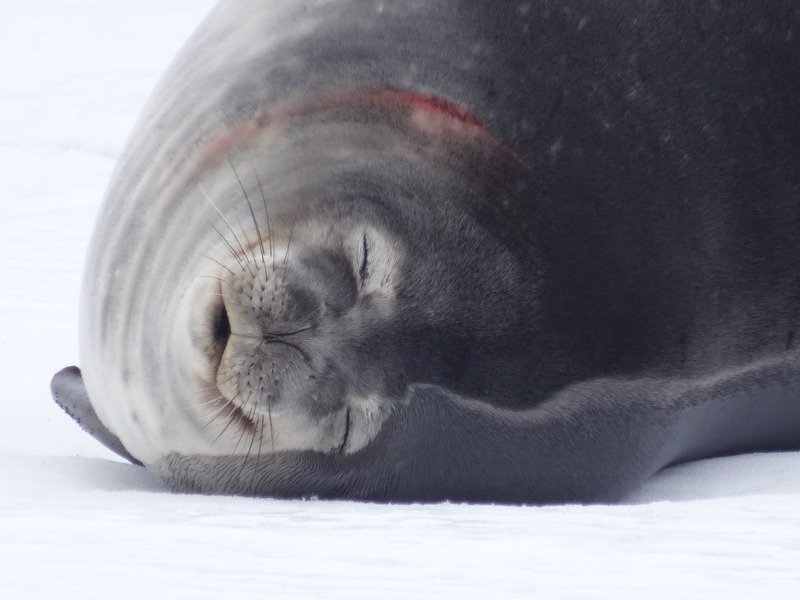
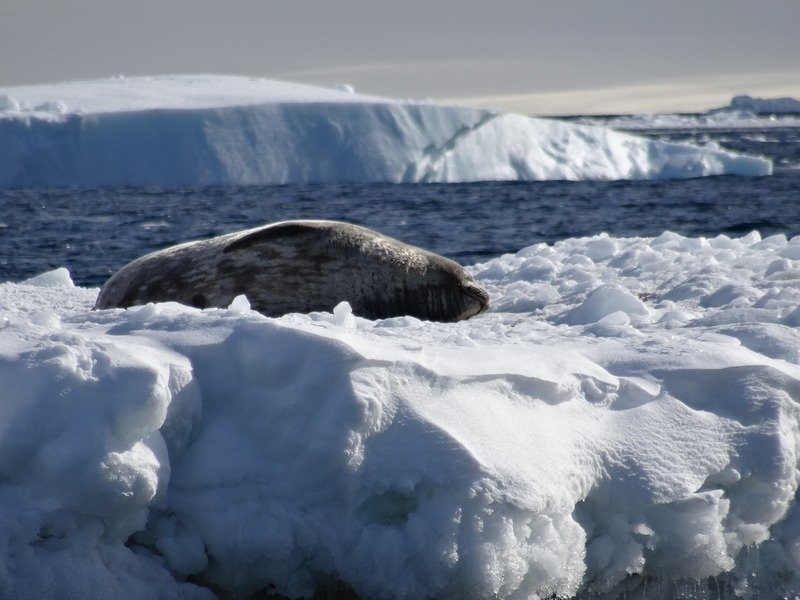
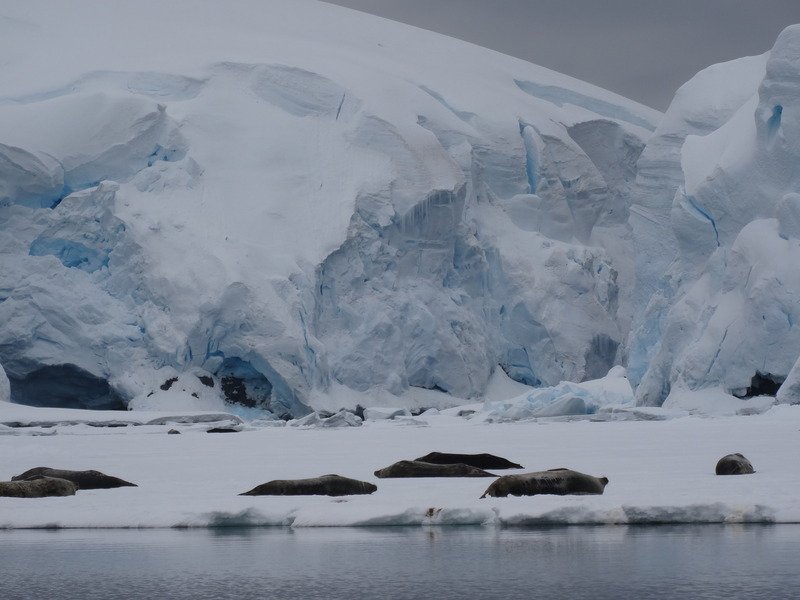
Meet the Weddell seal! These beauties can be found throughout the Antarctic region, where they rest, molt, and give birth on the ice.
The Weddell seal has flexible eating habits, which may be a useful strategy for adapting to climate change. But it’s not clear whether the overall Antarctic ecosystem will remain healthy in the face of the climate change that we have already locked in through human activity. And what happens in Antarctica impacts the rest of the planet.
#12DaysOfAntarctica | DAY 9: Black-browed Albatross
Meet the black-browed albatross, a bird with a pure white head and a beautiful “eyebrow” that can fly hundreds of miles at a time in search of food. The Falkland Islands, where I spotted this beauty, are home to about 70% of the world population of this species. Although black-browed albatrosses are famous for mating for life, climate change is making it harder for them to find food, mate, and raise their chicks. That places stress on the species, putting its future in danger.
#12DaysOfAntarctica | DAY 10: Antarctic Shag
Meet the Antarctic shag, also known as the king cormorant or blue-eyed shag. These birds are graceful in the sky, with their 4-foot wingspan, but take my advice and don’t get too close when they come in for a landing! The British Antarctic Survey discovered that some shag populations have fallen by more than half in recent decades, highlighting the stresses faced by this entire ecosystem. Will these shags find new places to live in order to adapt to climate change? Or will the species continue to decline? Our actions matter to the future of our planet, because what happens to Antarctica impacts the world.
#12DaysOfAntarctica | DAY 11: Elephant Seal
Meet the colossal wonders of the Antarctic waters – the elephant seals.
Let’s reconnect with the elephant seal, the largest species of seal on Earth and a highlight of Antarctic wildlife. Once nearly wiped out by hunters who were after their oil, elephant seal populations have rebounded thanks to legal protections. And by (carefully!) placing sensors on these animals, scientists have gathered important insights about our planet, like the ocean’s declining ability to absorb heat from a warming climate. That’s a beautiful example of using biology as technology in order to spur action for a better future, not just for people, but for our entire planet.
#12DaysOfAntarctica DAY 12: Adélie Penguins
Meet the Adélie penguins, a small but speedy bird that inspired World Penguin Day. Let’s celebrate together on April 25! In the short term, Adélie penguins might benefit from retreating sea ice, which makes it easier for them to hunt in the ocean. But too much sea ice and severe storms are also made more likely by climate change, which could endanger the Adélie’s long-term survival; there have been massive chick die-offs in the last decade. The bottom line is that Antarctica is complicated, particularly in the face of climate change—and these complications have global impacts that will affect us all in the coming decades.
A bonus in this photo is the Weddell seal resting on the ice!
Now that wraps up the 12 Days of Antarctica, a virtual compilation of the breathtaking biodiversity I encountered in the icy south.
While our planet is truly marvelous, we need to act now in order to preserve biodiversity and mitigate and adapt to climate change. I hope these pictures help to open our eyes and hearts to action for a resilient future, not just for us humans, but for the interconnected and unique web of life on Earth. And If innovating for a sustainable future resonates with you, please consider contributing to my journey and ongoing impact.
About Tiffany
Dr. Tiffany Vora speaks, writes, and advises on how to harness technology to build the best possible future(s). She is an expert in biotech, health, & innovation.
For a full list of topics and collaboration opportunities, visit Tiffany’s Work Together webpage.
Get bio-inspiration and future-focused insights straight to your inbox by subscribing to her newsletter, Be Voracious. And be sure to follow Tiffany on LinkedIn, Instagram, Youtube, and X for conversations on building a better future.




